The nation's first Women's Day celebration was in New York City in 1909. By the early 1980s, cities and states across the county were marking the occasion and Congress passed a resolution designating March as Women's History Month in 1987.
So, how are women doing nationwide since the first Women’s History Month 35 years ago? USAFacts collected metrics from various aspects of American life for a data snapshot of women in the United States. Women are getting more STEM degrees than a decade ago and more women are serving in the US Congress than any prior. Other numbers show where there are still disparities with American men.
Here are 10 facts to consider this Women's History Month:
- Sixty-three percent of women voted in the 2020 presidential election, compared to 59.5% of men. Women have voted at a higher rate than men in presidential elections since the 1980s. The last time men voted at a higher rate for president was 59.6% in 1976, while women voted at a rate of 58.8%.
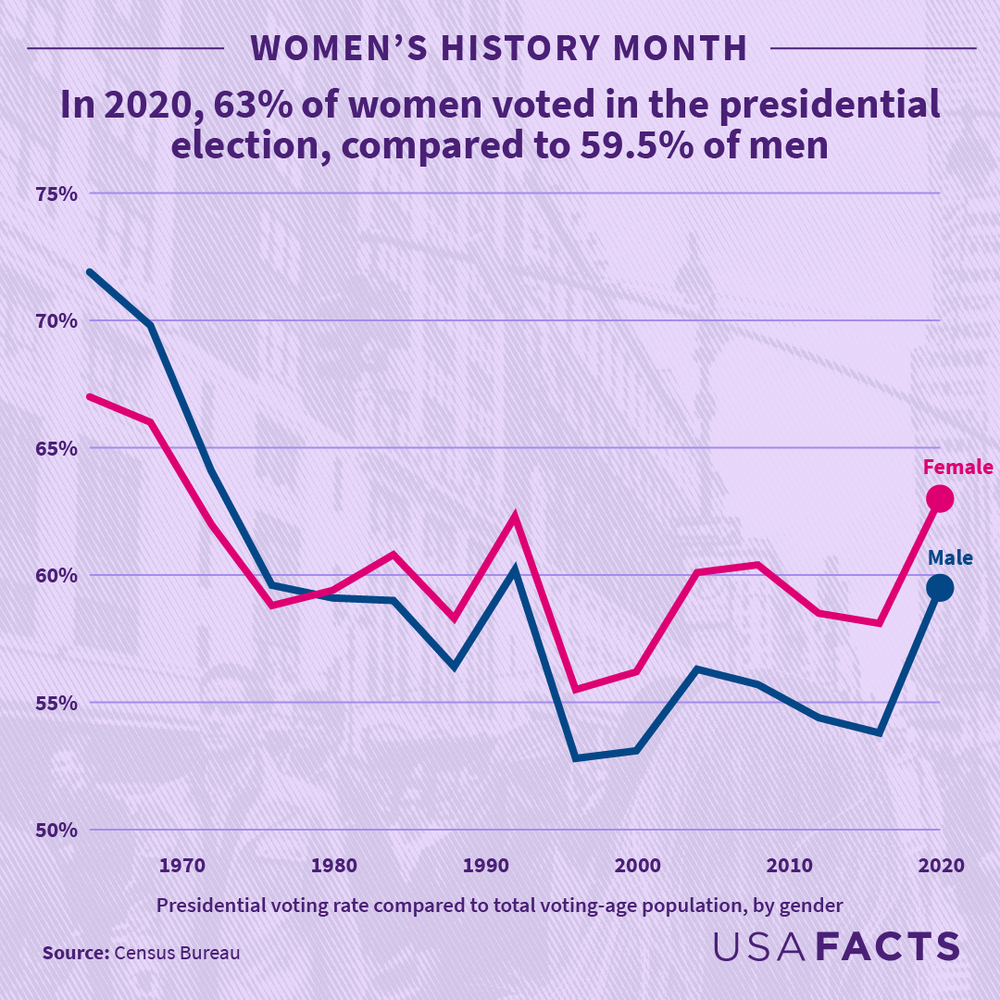
2. Since 1980, there have been more females than males in the US. The female population grew 6.3% in the last 10 years.
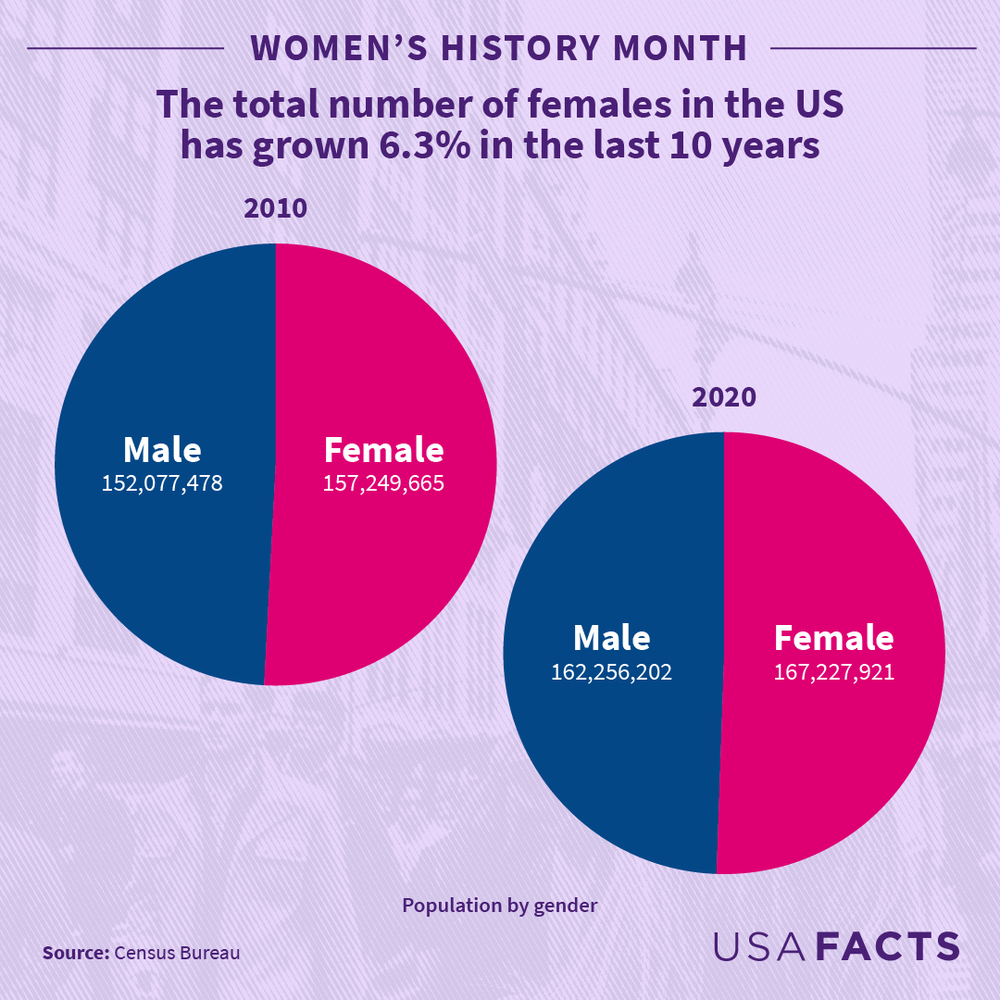
3. Women-owned businesses, or firms, were 24.7% of all firms in Hawaii — the most of any state. Virginia had the second most, with women owning 23.7% of all businesses in 2018. California had the most businesses owned by women (149,927), but due to the large number of firms in the state overall, it’s not among the top 10 states for businesses owned by women by percentage.
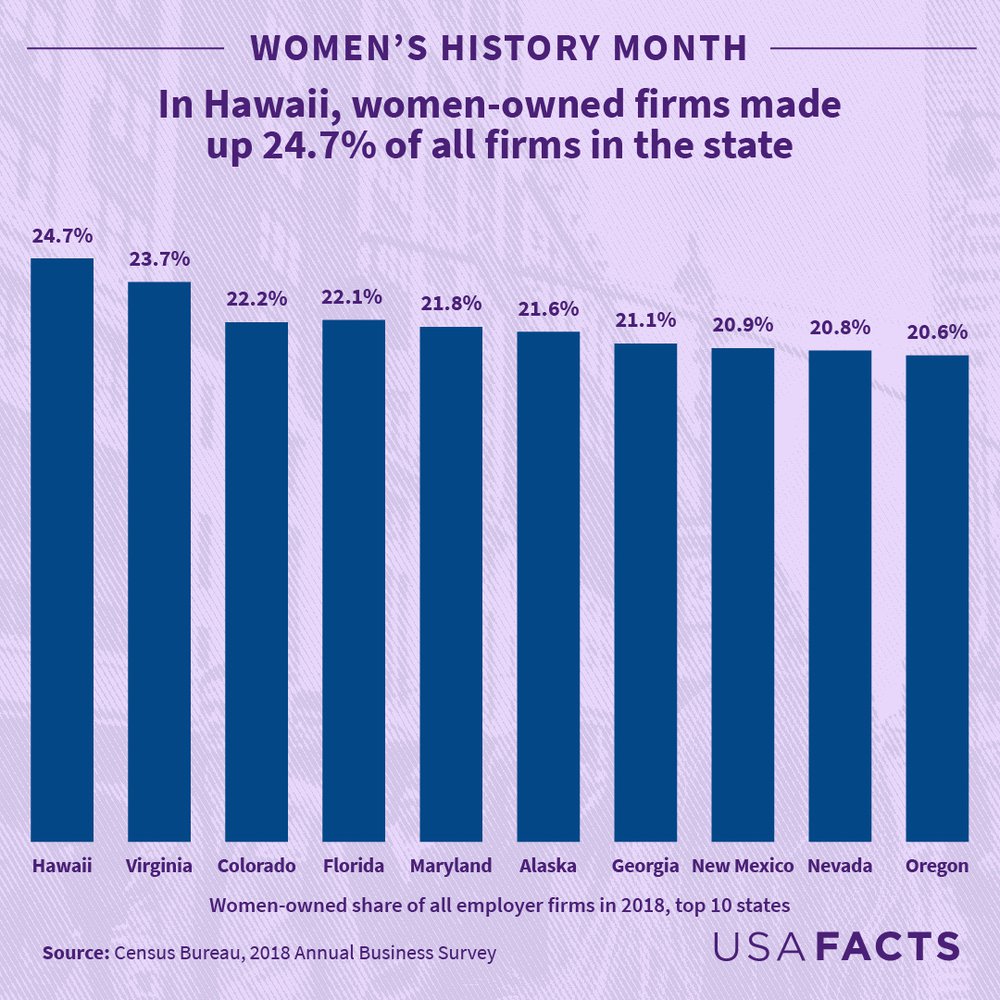
4. Women-owned businesses in arts, entertainment, and recreation grew 10.5% between 2017 and 2018, from 22,219 to 24,542, according to the Census Bureau. In 2018, approximately 16.8% of the nation's 1.1 million women-owned businesses were in the professional, scientific, and tech services sector, compared to 14.3% for all companies in the sector.
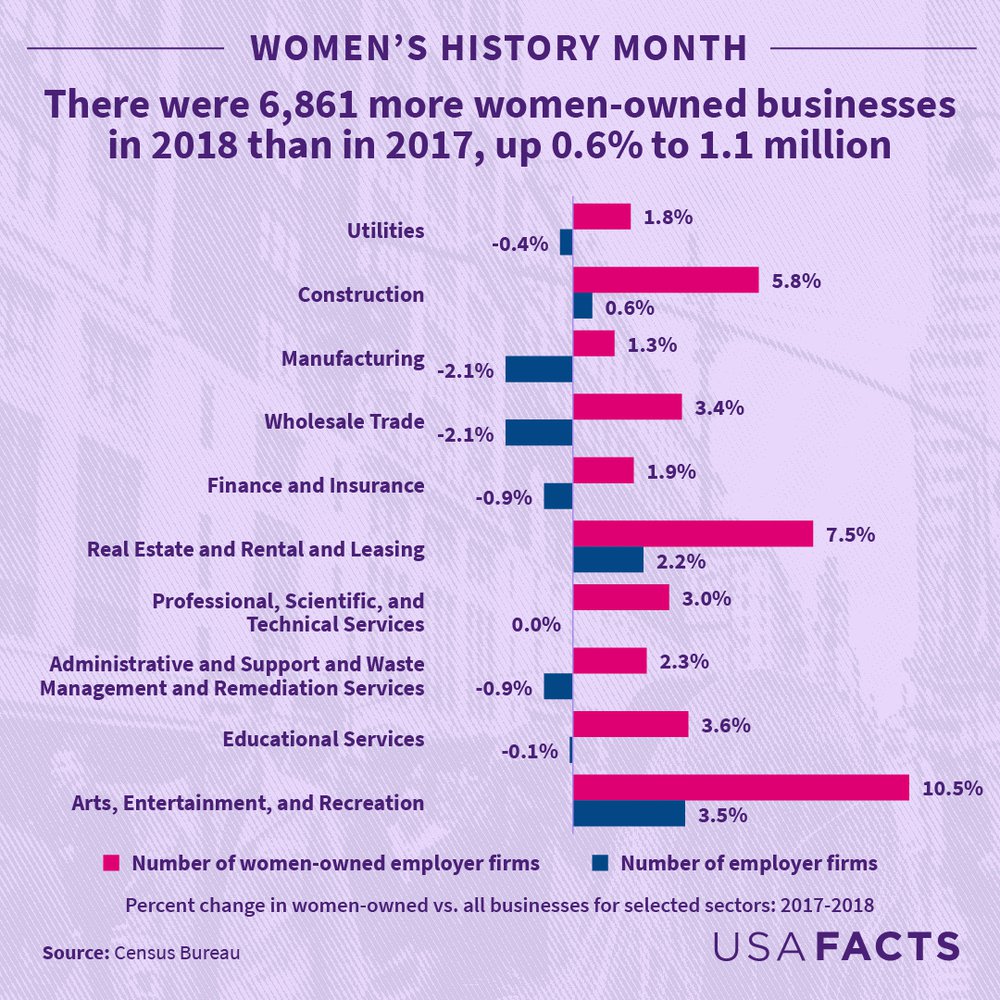
5. The number of STEM degrees women received increased 66.3% since the 2008–2009 academic year. Women earned 237,874 science, technology, engineering, and mathematics degrees in the 2017–2018 academic year, up from 143,018 between 2008–2009. Despite this increase, women were 32.4% of all STEM degree recipients in the 2017–2018 school year.
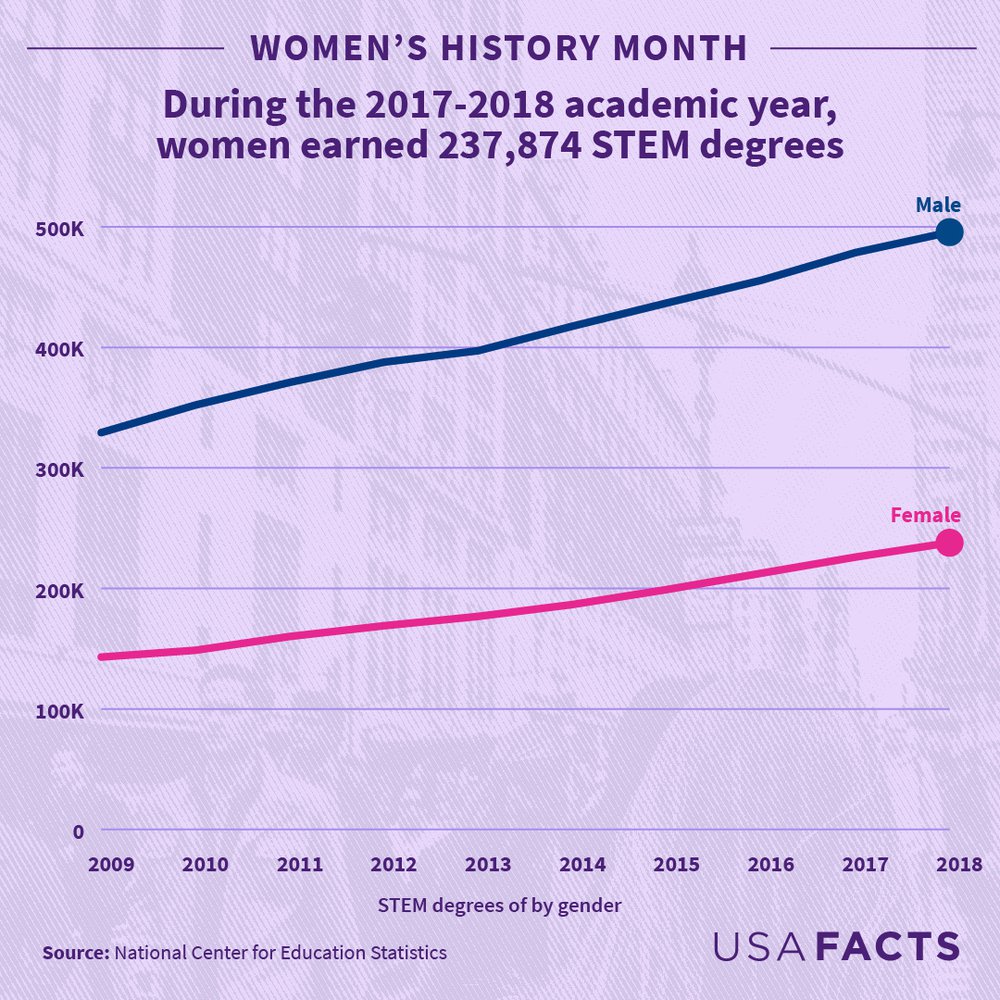
6. Half of women ages 55 to 66 have no personal retirement savings, while 47% of men in the same age group do. However, with 65% of men and 58% of women ages 55 to 66 being married, their amount of available retirement savings is difficult to assess.
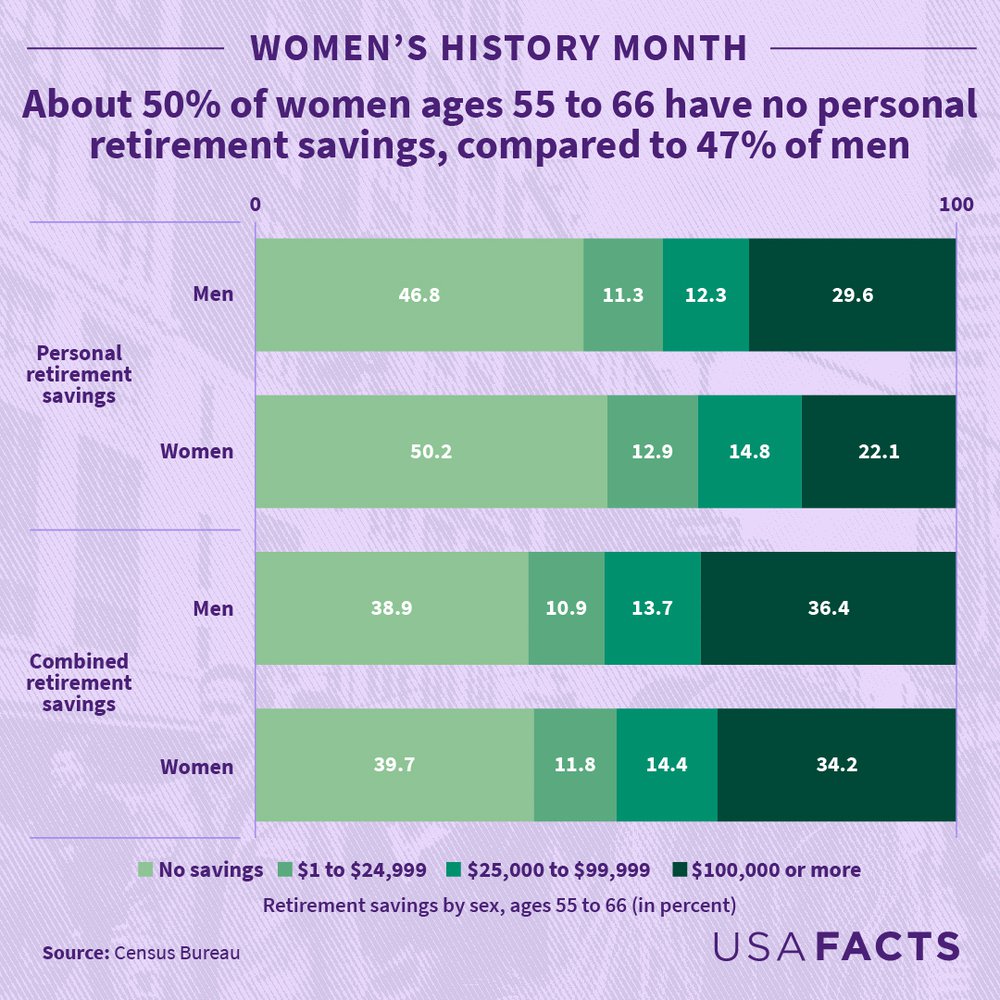
7. Since 1916, every state but Vermont has sent a woman to the US Congress. Sixteen states have sent women only to the House of Representatives. Alaska, Mississippi, and North Dakota have sent women to the Senate. Thirty states have sent women to both houses of Congress.
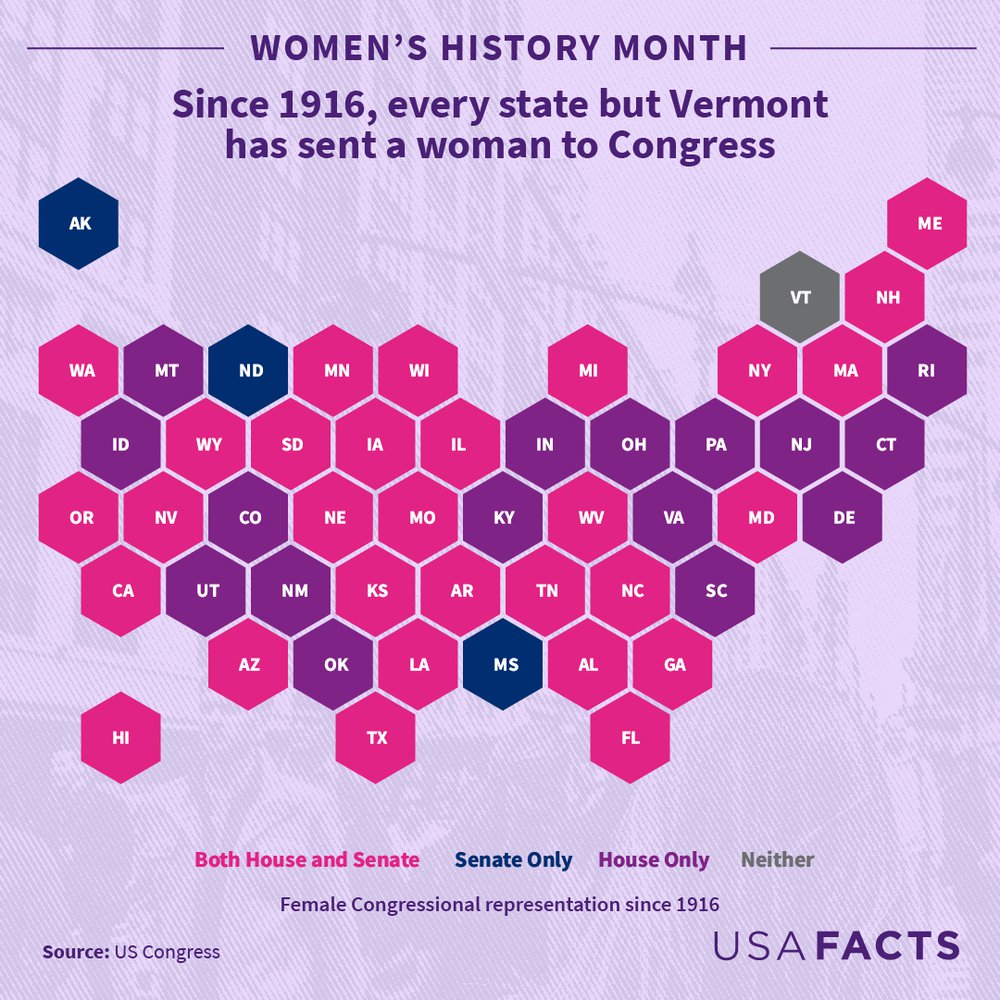
8. In 2021, 56% of women in this group were in the labor force. Women's labor force participation increased throughout the 20th century, peaking at 60% in 1999.
The Bureau of Labor Statistics specifically measures the labor forces as the civilian non-institutional population (including incarcerated people and people in assisted-care facilities) that is 16 years or older and either working or actively looking for work.
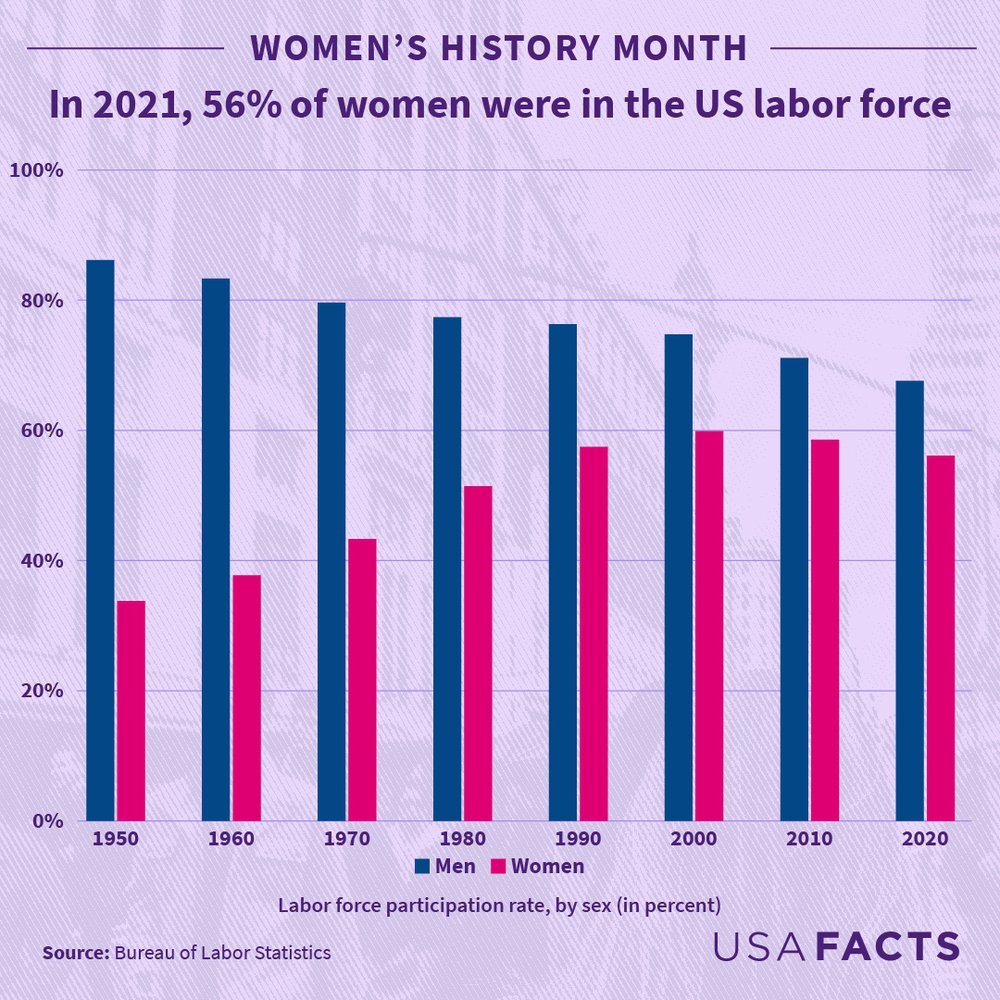
9. Life expectancy is at its lowest point in years, according to Centers for Disease Control and Prevention data. In 2020, life expectancy for US women was 80.2 years, down from 81.4 the year prior. This decrease is due to the number of deaths in the first year of the coronavirus pandemic.
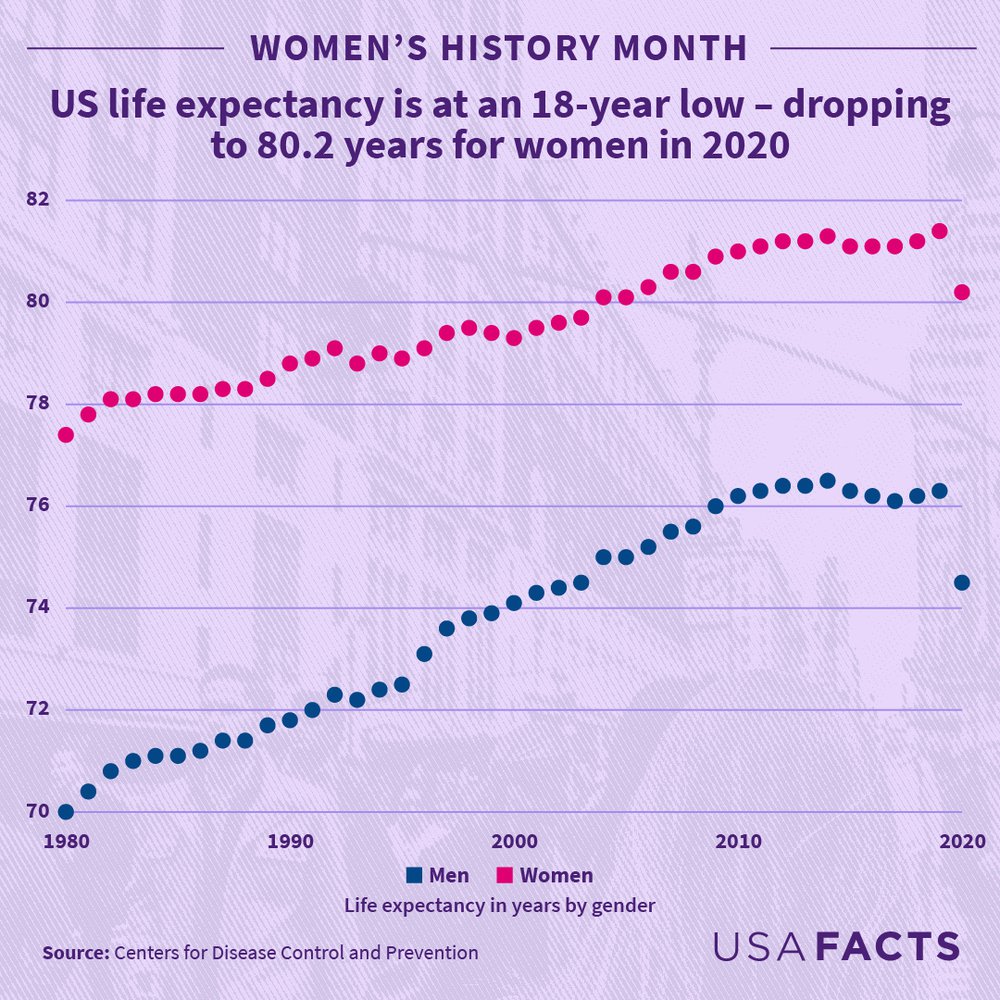
10. A record number of women are serving in today’s Congress. There were 123 women serving as were representatives and delegates in the House when this edition of Congress began in January 2021. There were initially 26 women in the Senate, but Georgia's Kelly Loeffler lost her runoff election to Rev. Raphael Warnock,. Alex Padilla replaced Kamala Harris after she became vice president.
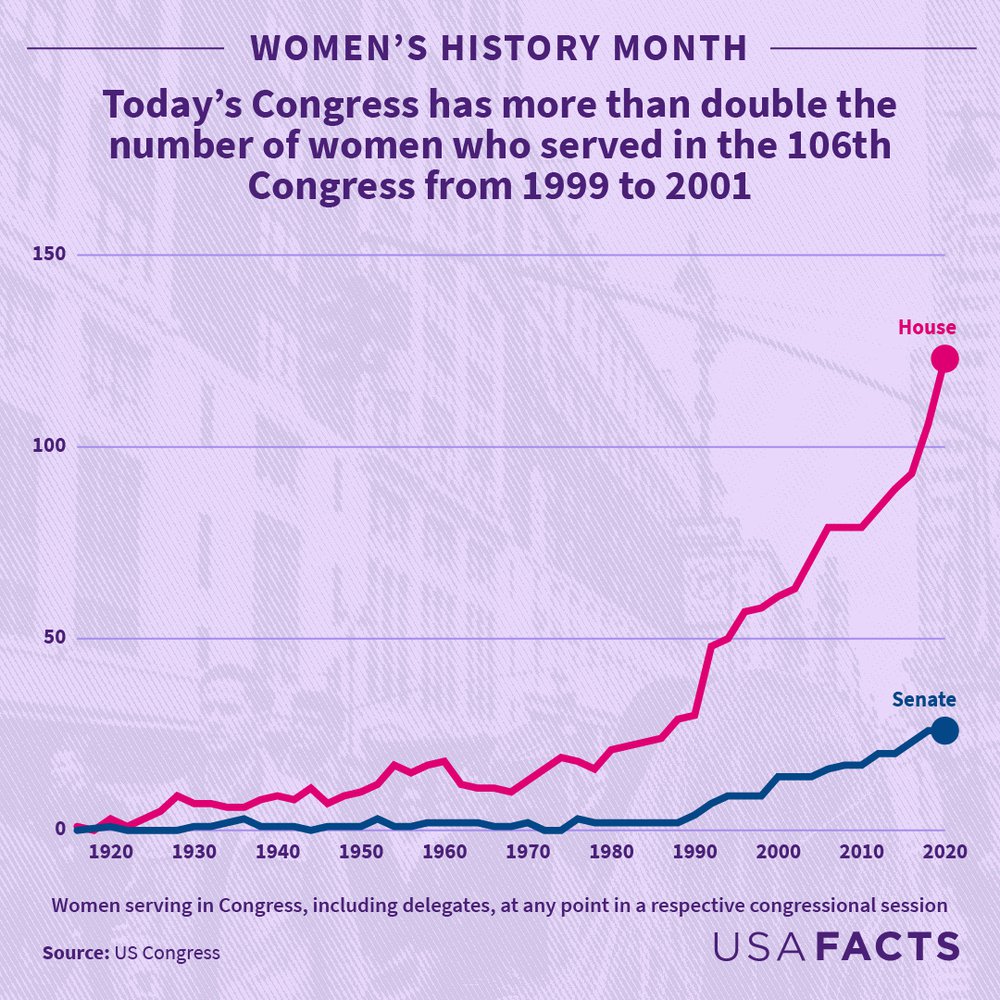
See more facts about women in the US, including the rise of women in the workforce in the 2010s. And for even more demographic snapshots of the US, see these 10 facts for Black History Month, these in-depth looks at Asian American data and Hispanic American data, and this collection of metrics on Native Americans.







